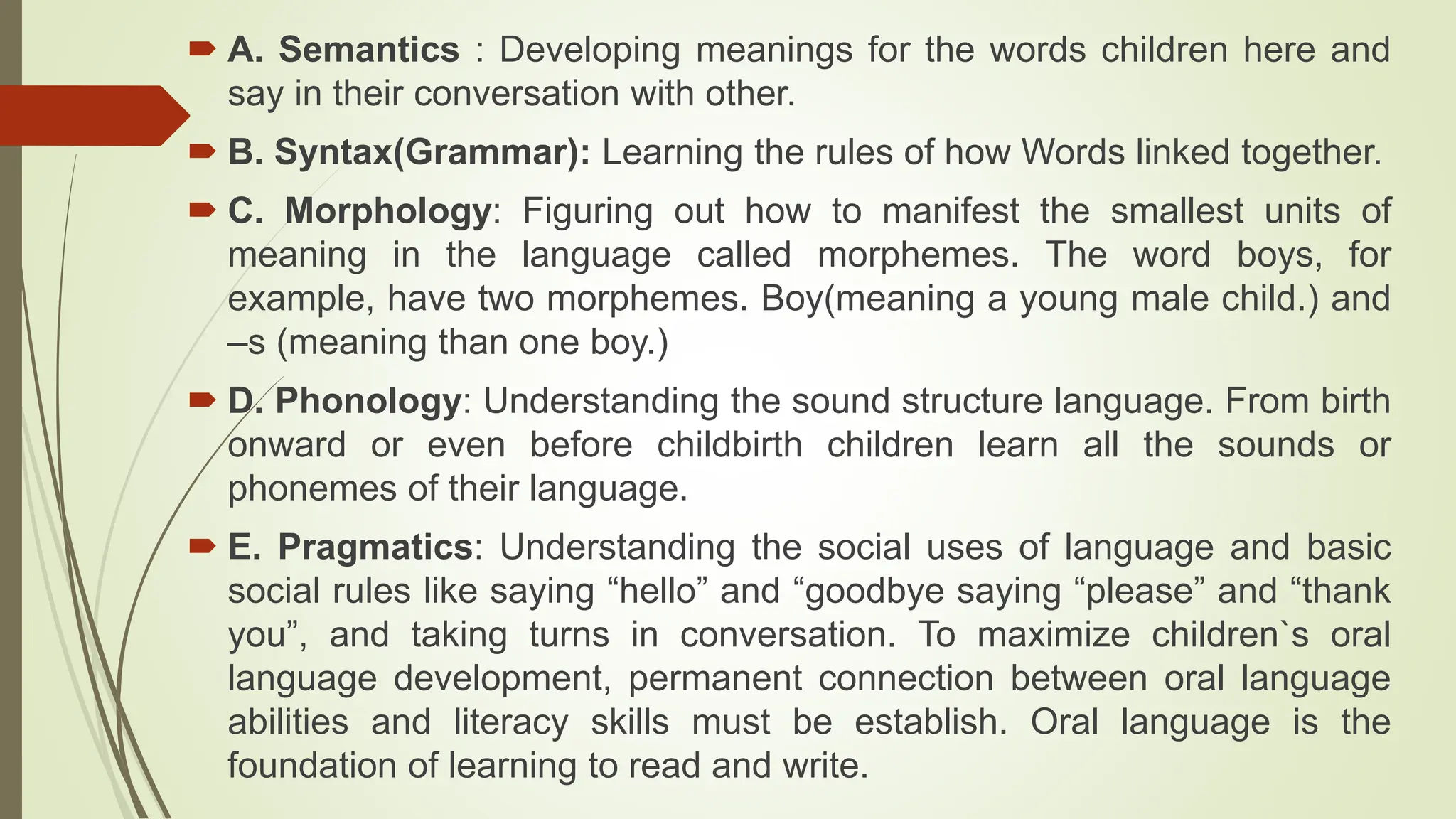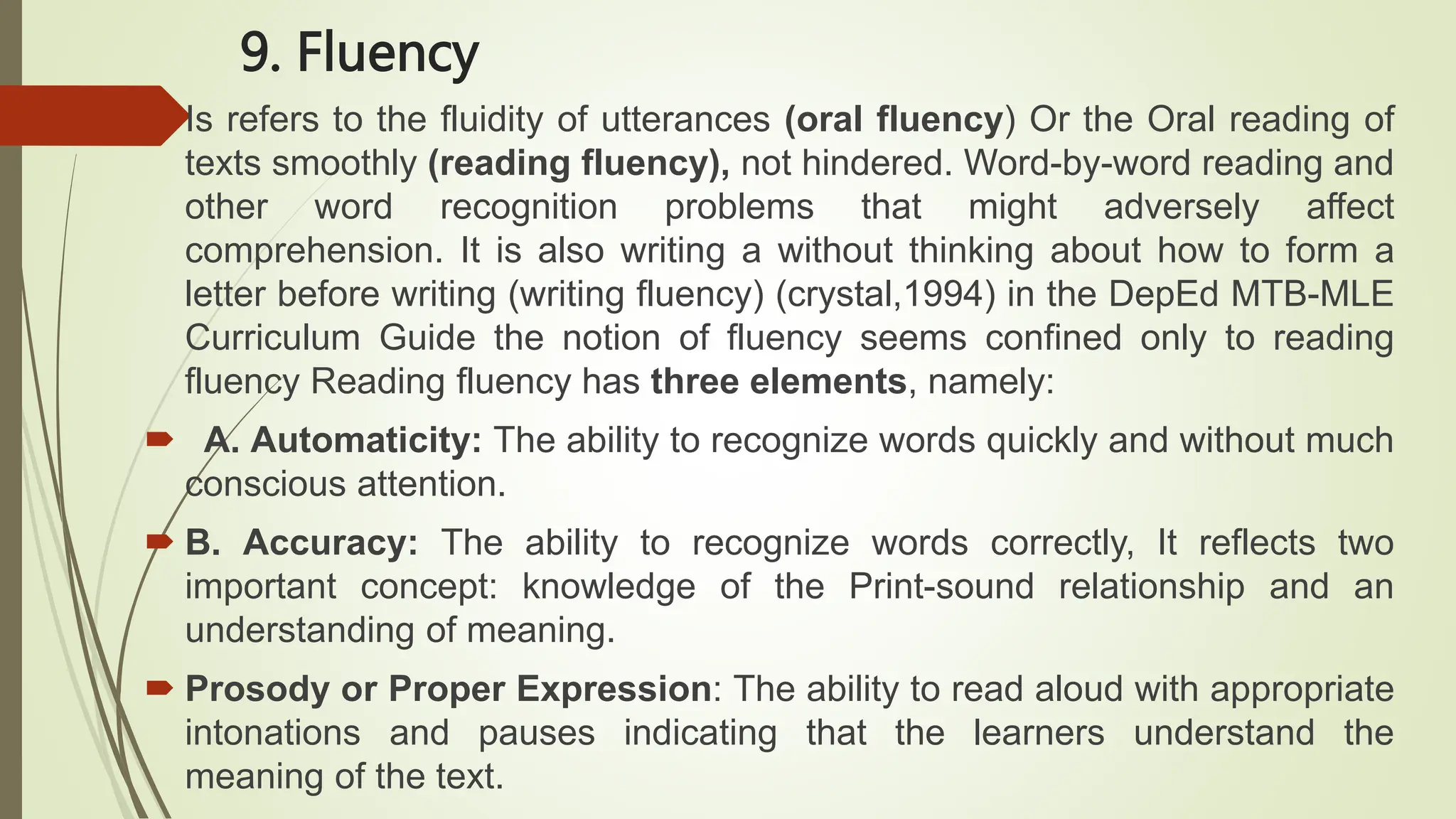The Philippine MTB-MLE curriculum includes fourteen domains of literacy that aim to enhance language competency in early education. Each domain, such as oral language, phonological awareness, and reading comprehension, focuses on specific skills necessary for cognitive development and effective communication. Understanding and mastering these competencies is crucial for teachers and contributes significantly to positive learning outcomes for students.































